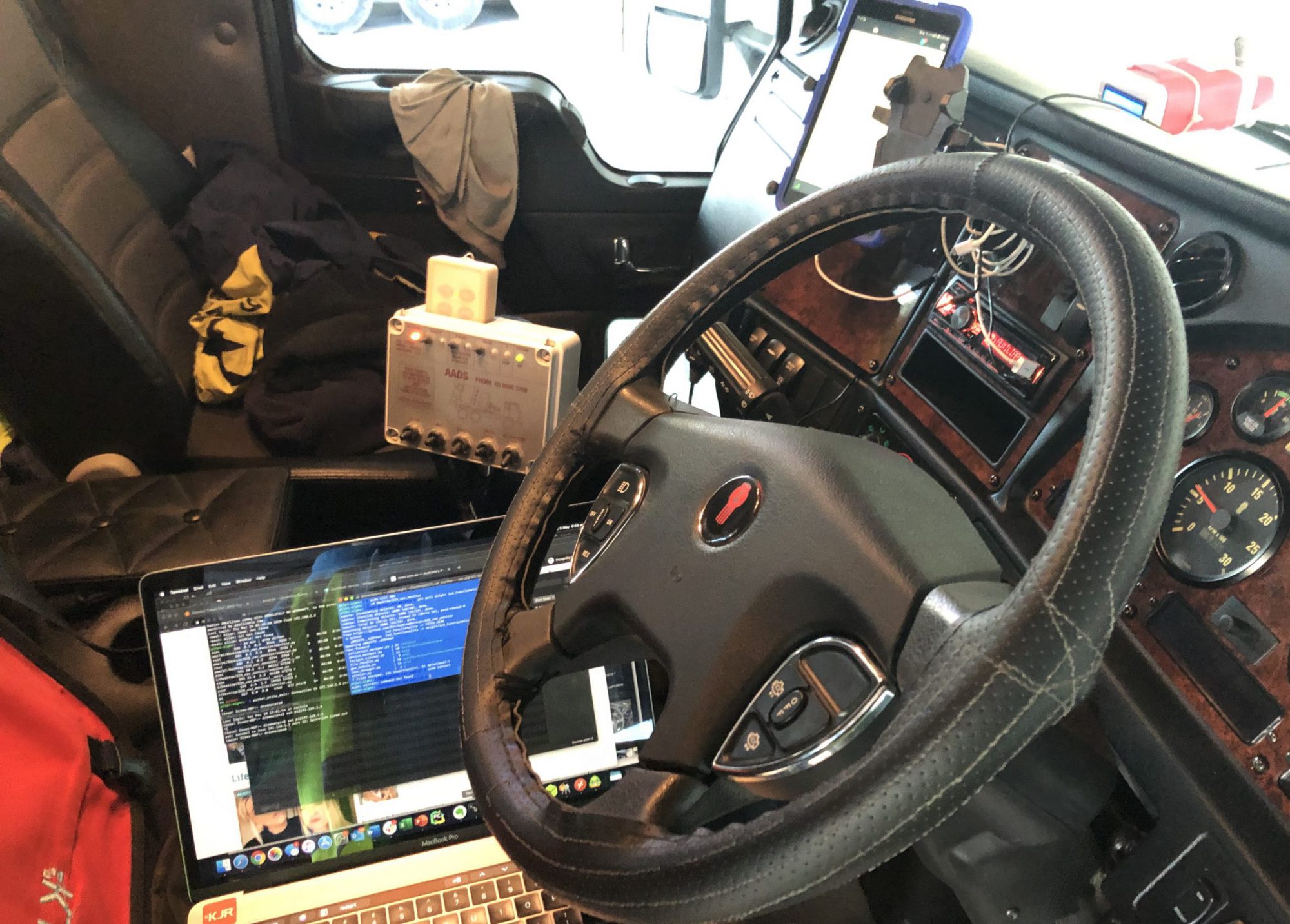The team at Frasers Livestock transport have been long time supporters of our FatigueM8 journey, with several of the team present at the FatigueHACK in 2018 where the solution was born. They were amongst the first, if not the first, to volunteer to be trial partners of our emerging technology.

On Friday last week (18th December 2020) the team at Frasers held their annual “Yarn in the Yard” driver health day and when Athol asked if we could be part of the session we jumped at the chance. The line up of presenters had us experience some serious imposter syndrome; Dr Ross and Dr Heart truck founder, as well as The Assistant Minister for Roads and the CEO of the HNVR to name but a few.
Frasers main depot is located in Warwick QLD in the heart of QLD’s Agriculture belt (?) and we were in awe of the amount of impeccably maintained equipment that was in the yard when we arrived. We were part of the “Fatigue & Distraction” session sharing the stage with Andreas (NHVR Fatigue expert), Dr Darren Wishart (Griffith University) and Sgt Paul Kelly (Commander Heavy Vehicle Operations QLD).

We presented a short summary of our journey to date and also participated in an interactive panel discussion with the attendee’s.
Our presentation had two (2) purposes, firstly to explain how FatigueM8 is aiming to tackle fatigue and secondly to recruit a volunteer to have a FatigueM8 unit installed. We were able execute both parts of the plan, sharing the story and getting a volunteer (well several actually). The candidate truck was a T659 (Frasers only have the one model in their fleet) which had joined the fleet only a couple of months beforehand.



We’re getting faster and faster with the installation process, this time around it took roughly one and a half hours, which included a couple of chats with curious team members who stopped for chat when they saw me in the cab.
The Yarn in the Yard session was the catalyst for a couple of other side visits for the FatigueM8 team. On the way back from Warwick to Brisbane (where I’d be flying home from) we stopped into see the folks at TyTec Logistics. Tytec runs a fleet of K200’s transporting oversized tyres to which support mining operations throughout Australia.

Interestingly when we jumped into the cab of the impressive K200 the driver already had a steering wheel cover on (see below left) and it was the same model that we’d used many times in our earlier prototyping and trial activities (below right).


Having completed the Frasers installation only hours before hand, we knocked this installation over in an hour and 15 mins (which included 10 mins to grab the notebook out of the car).


Both the Frasers and Tytec trucks hit the road Sunday and the data started flowing into the system. Below are a couple of pictures from the forward facing camera recording the road conditions.

K200 Front facing Camera 
T659 Front facing Camera
Until next time, stay safe












































